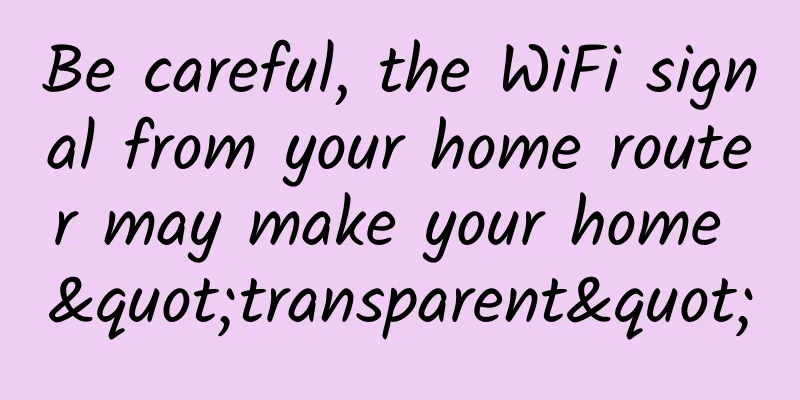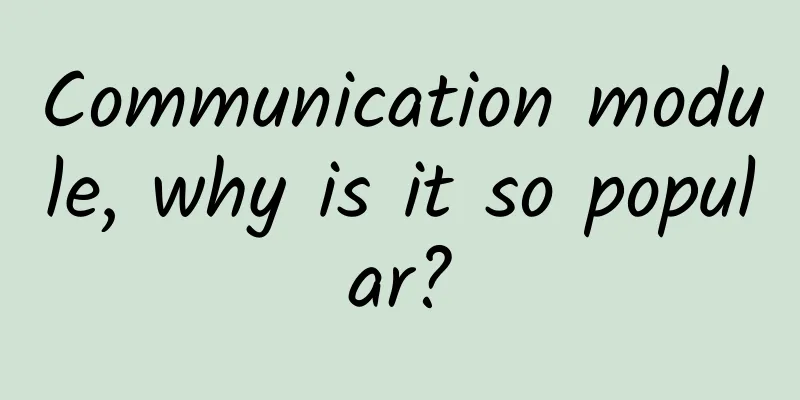Be careful, the WiFi signal from your home router may make your home "transparent"

|
When you connect to a public WiFi without a password, some information on your electronic devices may be leaked. However, you may never dream that your own wireless router may also make your home "transparent" - the spatial structure of your home may be exposed at a glance. On April 28, Science magazine reported that physicists *** used radio waves from WiFi transmitters to encode and create 3D holograms of real objects. This scene is similar to the scene in "Star Wars" where Princess Leia used a hologram to ask Obi-Wan for help. In principle, this technology can allow people outside to "see" indoors simply by using WiFi signals leaked from indoors. However, some researchers say that this "spying" method may be easier said than done. According to Science magazine, Friedemann Reinhard, a quantum sensor expert at the Technical University of Munich (TUM), said that the idea came up a few years ago. Reinhard said that at that time, they were discussing what the world would look like through Wi-Fi signals during lunch. Reinhard said that it was obvious that if you want to see the world through Wi-Fi, you need to make a hologram. Cameras produce images by collecting light reflected from an object and focusing it onto a screen to create a 2D pattern of greater or lesser intensity: a photograph. In contrast, so-called holograms make more use of the wave nature of light, usually using lasers as the light source. A laser beam is split into two beams, half of which is reflected from the object onto a photosensitive plate, and the other half of the beam is directly shone on the plate. The interference of the two sets of light waves produces light and dark spots, i.e. a hologram.
Now, Reinhard and undergraduate student Philipp Holl at TUM have used radio waves emitted by a Wi-Fi router instead of lasers to generate a hologram of a thin aluminum cross. They published their research in Physical Review Letters, a high-level physics journal sponsored by the American Physical Society. Rather than relying on the billions of digital bytes of information encoded in Wi-Fi signals, their experiment relies on the signals being clean, coherent waves. However, instead of recording the key interference pattern with a photographic plate, the researchers recorded it with a Wi-Fi receiver and reconstructed it in a computer. They placed a Wi-Fi transmitter in the room, 0.9 meters behind a thin aluminum cross. They then placed a standard Wi-Fi receiver 1.4 meters in front of the cross and slowly moved it back and forth to draw a "virtual screen" that stood in for the photographic plate. And instead of shining a separate reference beam directly into the screen, they placed a second, fixed receiver a few meters away, where it had a direct view of the transmitter. For each point on the virtual screen, the researchers compared the signals received simultaneously by two receivers and created a hologram by plotting the delay caused by the aluminum cross. The virtual hologram is not exactly like a traditional hologram because the researchers cannot recover the image of the object by shining more radio waves. Instead, the scientists use a computer to measure the distance in time that the radio waves have to travel back from the screen to hit the object. Then, the cross appears. “You can tell there’s a cross in the image,” says Neal Patwari, an electrical engineer at the University of Utah in Salt Lake City. “That’s pretty impressive,” he says, but he cautions that the approach may not work well in cluttered environments. Also, because the receiver and the object are in the same room, the cross is easily visible. In principle, it should be possible to place the Wi-Fi receiver outside and the object inside, Reinhard says. However, Mark Coates, a computer engineer at McGill University in Montreal, Canada, warns that this could be tricky, especially if there are metal screws in the wall, which can also reflect radio waves. “The waves are coming from all directions, which makes this technique more challenging,” says Coates, who was not involved in the project. Reinhard originally envisioned placing an array of Wi-Fi sensors on the ceiling of a factory, allowing the hologram to better track products tagged with radio frequency identification tags. Patwari noted that other researchers have developed simpler methods to track the movement of people within a building using stray Wi-Fi signals. Patwari expects this radio tracking technology to develop quickly: "In five to 10 years, Wi-Fi will be used more for positioning than for communication." |
<<: Operators' 5G services are now available? Don't be fooled!
>>: New optical spiral technology can increase information transmission rate tenfold
Recommend
If we can't be fashionable, we should be stable. Which of the big guys in the technology circle looks most like an old cadre?
The bigwigs in the tech industry all have their o...
inetWS: $2/month KVM-2GB/30G SSD/100M unlimited traffic/7 data centers in Seattle, Phoenix, Chicago, etc.
inet.WS is a foreign hosting company founded in 2...
[Black Friday] Anynode: $8/year KVM-512MB/10G SSD/1TB/Las Vegas
Anynode released a Black Friday discount plan, of...
Practical tips: Teach you step by step to solve the problem of WiFi interference
Suppose there is a large classroom that can accom...
10gbiz: 50% off, starting from $3.44/month, Hong Kong CN2 GIA/Los Angeles CN2 GIA/AS9929/large hard disk VPS optional
10gbiz is offering a 50% discount on all VPS host...
IoT and 5G are changing the world
By 2025, there will be 5 billion cellular-connect...
UFOVPS limited 10% off + recharge rebate, US CN2 GIA/Hong Kong CN2 GIA/Japan CN2 GIA optional
UFOVPS is a Chinese hosting company founded in 20...
Finding strength in numbers: Data center agglomeration effect
In the past, data centers were often built in rem...
Top SD-WAN vendors and manufacturers in 2021
Software-defined WAN (SD-WAN), as the name implie...
You won’t know how slow your phone is until you see it! A conscientious tool to dig deep into your phone
This tool, called SoloPi, is used to monitor the ...
From January to May, my country's telecommunications business revenue totaled 612.7 billion yuan, a year-on-year increase of 6.7%.
[[407105]] On June 23, according to the "Eco...
Is the United States blocking Huawei, or the entire future of 5G?
[[349279]] The United States is creating obstacle...
Platform extension ecosystem accompanies Huawei's China ICT Ecosystem Tour 2018 Highlights Halfway Review
[Original article from 51CTO.com] In the blink of...
TNAHosting: 12G memory 500GB hard disk OpenVZ monthly payment from $5, 4G memory KVM monthly payment of $5
Some businesses give people the impression that t...
Introducing social capital to solve the 5G network construction dilemma
Three months after the issuance of 5G licenses, t...









